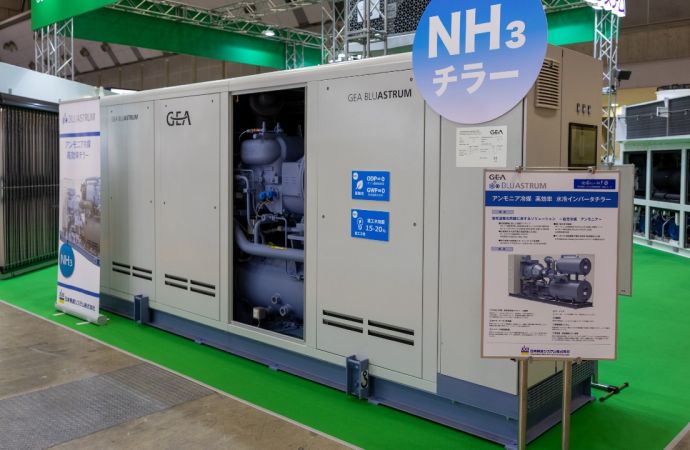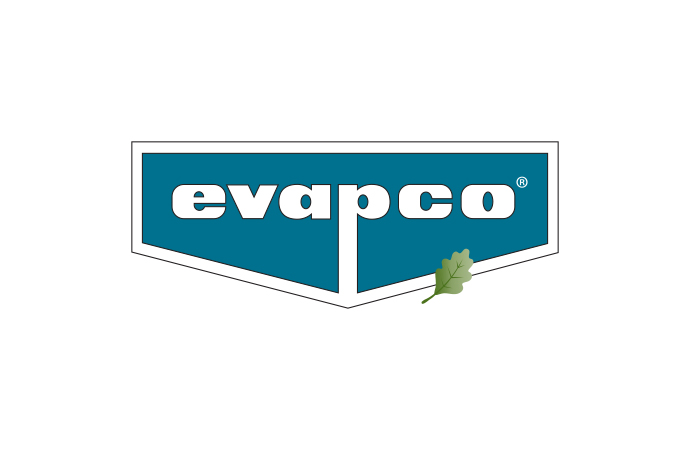Ammonia manufacturers and end users will focus on low-charge ammonia refrigeration and HVAC systems in 2019.

In this latest of our NEXT Series of articles, ammonia system manufacturers and component suppliers – along with end users – expressed confidence to this website that low-charge ammonia would be even more successful in refrigeration and HVAC applications in 2019.
Slow and steady
The use of ammonia as a refrigerant has grown steadily since the 19th Century. Now it seems likely that this natural refrigerant will soon replace HCFCs and HFCs in new areas.
Swiss multinational Nestlé, which began using ammonia in industrial refrigeration systems in the 1980s, will maintain its course, according to refrigeration manager Vincent Grass. “Having deployed natural refrigerant systems for decades already as a result of our strategy begun in 1986, our investment needs to convert existing systems are very low for 2019,” Grass explains.
Swiss retailer Migros will also invest in ammonia in industrial systems as part of its strategy to go towards 100% natural refrigerants according to Andreas Moser, chief refrigeration engineer at Migros Engineering Solutions.
Across the pond Ed Estberg, a refrigeration consultant for Raley’s, a California-based supermarket chain, says he expects the retailer to install its first natural refrigerant equipment in 2019.
“The current [natural refrigerant] design is a mini-charge ammonia vapor compression system cooling a CO2 liquid-overfeed system. Raley’s has one replacement store that will have this all-natural refrigeration system for both product refrigeration and air conditioning. The mechanical system is now being assembled,” Estberg says.
HVAC grows in Europe
Alongside the usual investment in refrigeration, many manufacturers predict new innovations. “We are getting closer to 2020, when R22 has to be totally phased out in North America, and in Europe we see a lot of interesting ammonia heat pump projects,” Jesper Olsen, application expert (refrigeration) at BU Energy, a division of Swedish heat exchanger manufacturer Alfa Laval, told ammonia21.com. “Our product portfolio is well adapted for the new market demands and we still see positive signs all over the world.”
We are getting closer to 2020, when R22 has to be totally phased out in North America, and in Europe we see a lot of interesting ammonia heat pump projects.”
– Jesper Olsen, Alfa Laval
Manuela Rallo, sales area manager at Italian systems manufacturer, Tecnofreddo, agrees. “Although ammonia’s growth has been almost flat in recent years, our expectations are that ammonia chillers will be still the market-leading systems, remaining dominant in the European market, but followed by carbon dioxide and hydrocarbons systems,” she says.
“Our ammonia units have also found their position in medium to large-scale air-conditioning for office buildings, universities, distribution centres and airports, through the installation of ammonia heat pumps for heating and cooling,” Rallo adds.
German compressor and systems manufacturer GEA is also investing in ammonia air-conditioning systems. It launched an ammonia chiller and screw compressor designed for air-conditioning applications, the BLU-Q, in 2018.
Low-charge to grow in America
The Blu-Chiller series (which includes the BLU-Q, along with other ammonia chillers) will experience a 5% increase, according to Wolfgang Dietrich, responsible for product management (chillers) at GEA, while the FX Chiller (standard) series will be at the same level as 2018.
Dietrich attributes the positive outlook to, “Increased demand for standard low ammonia content chillers”.
Caleb Nelson, VP business development at Azane, a U.S. manufacturer of low-charge ammonia packaged systems and part of Scottish Star Refrigeration, agrees that low-charge ammonia uptake will increase in 2019 more than it did in 2018.
“We’ve had a few projects that have been brewing for several years and we expect them to finally materialise in 2019,” Nelson said. “Low-charge ammonia represents a significant sea change for several industrial users that move toward technology change with caution. As users learn that our low-charge technology is actually very mature (25+ years while undergoing continuous improvement), it helps with the transition.”
The market adoption of [low-charge] technology is growing, as was seen in our expanding 2018 sales, which were 63% higher than 2017; we forecast an additional 70% sales growth in 2019 over last year.”
– Kurt Liebendorfer, Evapco
Kurt Liebendorfer, vice-president of Evapco, another U.S. manufacturer of low-charge ammonia packaged units, agrees that 2019 will be a positive year for low-charge systems.
“The market adoption of this new technology is growing, as was seen in our expanding 2018 sales, which were 63% higher than 2017; we forecast an additional 70% sales growth in 2019 over last year,” Liebendorfer adds.
In the Americas, a key way of reducing the ammonia charge has been to invest in ammonia/CO2 cascade systems. Ricardo Garcia, director of engineering and projects at Frialsa, a Mexican cold storage operator, said: “At the end of 2018, Frialsa started up a new distribution centre in Tijuana, Mexico with a 700-TR NH3/CO2 cascade system.”
In February, the cold storage operator will bring this technology to a distribution centre in Lima, Peru, “using a 640-TR NH3/CO2 system”. “Frialsa will also have expansions at Mexico facilities during the rest of the year with natural refrigerants,” Garcia said.
The US is another country in the Americas banking on the ammonia/CO2 trend continuing to bear fruit.
“Campbell Soup has a program to phase out our R22 equipment and utilise either CO2 or ammonia/glycol systems,” said Bing Cheng, senior manager, utilities, environmental and sustainability programs at Campbell Soup. “We commissioned three new CO2 systems in 2018 (two ammonia/CO2 cascade systems and one transcritical CO2 system) and will commission one cascade ammonia/CO2 system for a freezer in Denver, Pa., this spring.”
Mike Lynch, vice president of engineering at U.S. Cold Storage, maintains that his company only uses natural refrigerants and “will continue to do so in the future”.
“In 2018, USCS utilised the following: 61% anhydrous ammonia and 39% carbon dioxide. I expect this ratio to remain relatively stable through 2019, with one new facility and an expansion of three existing facilities,” Lynch says.
Ammonia has always been acceptable; however, there is often a perception that it is much more dangerous than it really is."
– Brandon J. France, Stellar
Manufacturers are optimistic that technology innovations will continue to encourage the safe use of this natural refrigerant.
“Ammonia has always been acceptable; however, there is often a perception that it is much more dangerous than it really is,” said Brandon J. France, director of packaged refrigeration systems at Stellar, a U.S. contractor.
“It’s therefore very important to educate users on ammonia safety, including proper installation, maintenance, and other safeguards such as secondary refrigerants, which greatly reduce the ammonia charge as well as the potential for exposure to ammonia,” France said.
The NEXT Series takes an annual look at the key market, policy and technology drivers likely to influence natural refrigerant uptake. For updates on these and other key policy developments over the course of the year, sign up to our newsletter.
Related stories






_1522327086.png)


